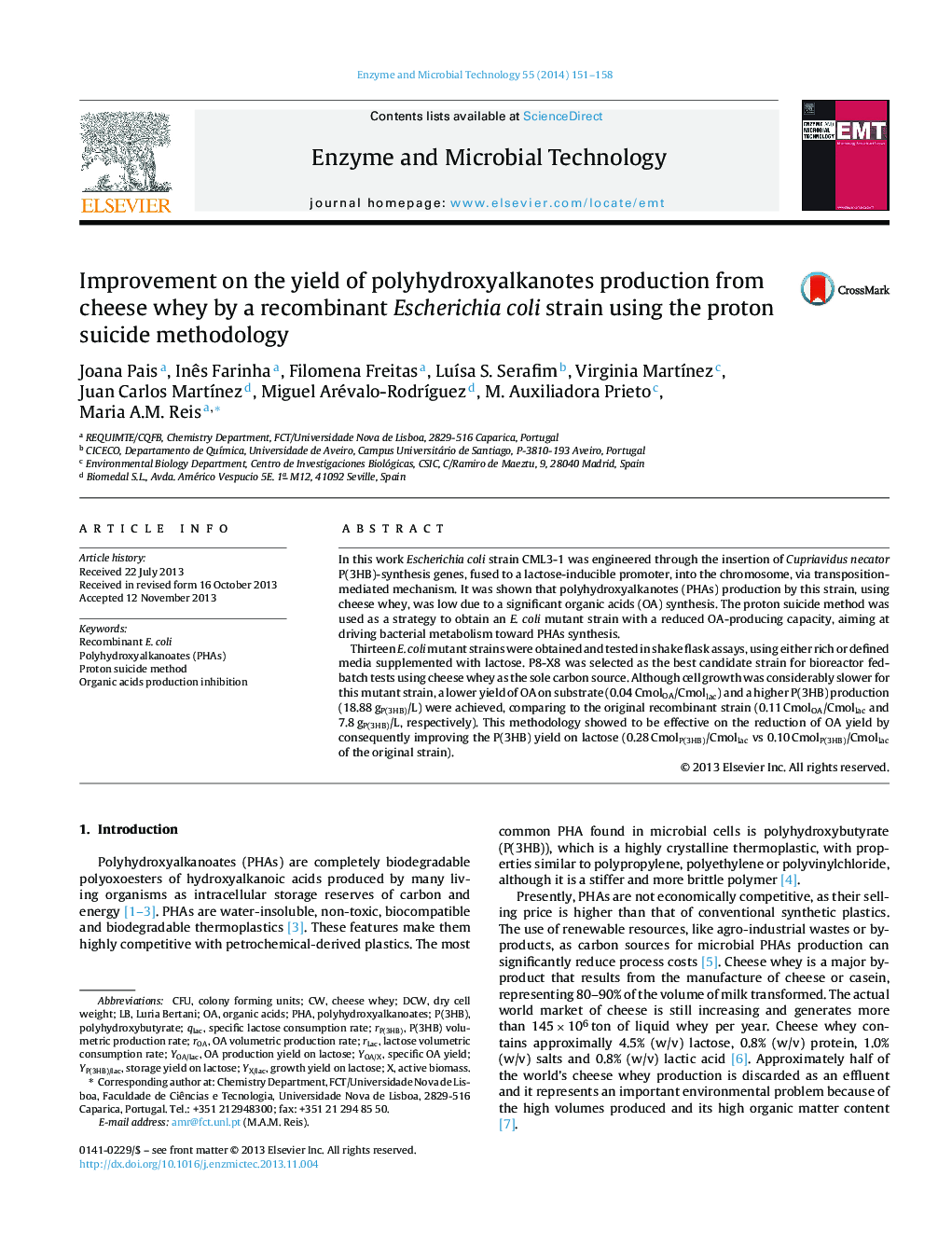| Article ID | Journal | Published Year | Pages | File Type |
|---|---|---|---|---|
| 17243 | Enzyme and Microbial Technology | 2014 | 8 Pages |
•The proton suicide method was used to generate E. coli mutant strains.•E. coli mutant strains had reduced organic acids production capacity.•Strain P8-X8 was selected for its high PHA accumulation capacity.•Bioreactor cultivations using cheese whey as substrate were conducted.•Low organic acids production was obtained and PHA yield on lactose was improved.
In this work Escherichia coli strain CML3-1 was engineered through the insertion of Cupriavidus necator P(3HB)-synthesis genes, fused to a lactose-inducible promoter, into the chromosome, via transposition-mediated mechanism. It was shown that polyhydroxyalkanotes (PHAs) production by this strain, using cheese whey, was low due to a significant organic acids (OA) synthesis. The proton suicide method was used as a strategy to obtain an E. coli mutant strain with a reduced OA-producing capacity, aiming at driving bacterial metabolism toward PHAs synthesis.Thirteen E. coli mutant strains were obtained and tested in shake flask assays, using either rich or defined media supplemented with lactose. P8-X8 was selected as the best candidate strain for bioreactor fed-batch tests using cheese whey as the sole carbon source. Although cell growth was considerably slower for this mutant strain, a lower yield of OA on substrate (0.04 CmolOA/Cmollac) and a higher P(3HB) production (18.88 gP(3HB)/L) were achieved, comparing to the original recombinant strain (0.11 CmolOA/Cmollac and 7.8 gP(3HB)/L, respectively). This methodology showed to be effective on the reduction of OA yield by consequently improving the P(3HB) yield on lactose (0.28 CmolP(3HB)/Cmollac vs 0.10 CmolP(3HB)/Cmollac of the original strain).
